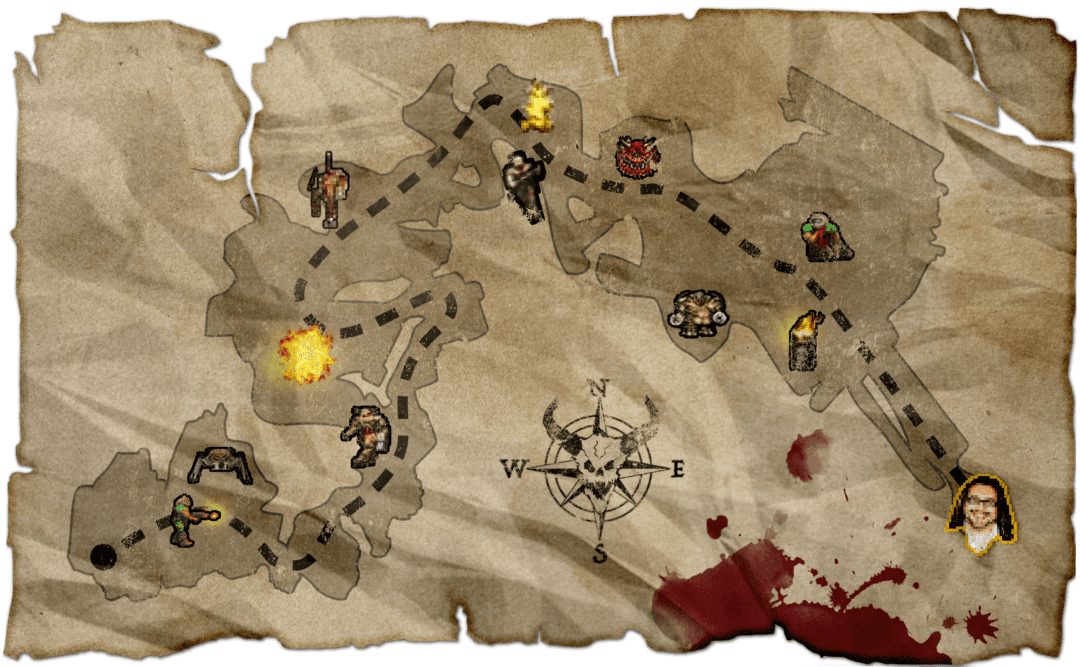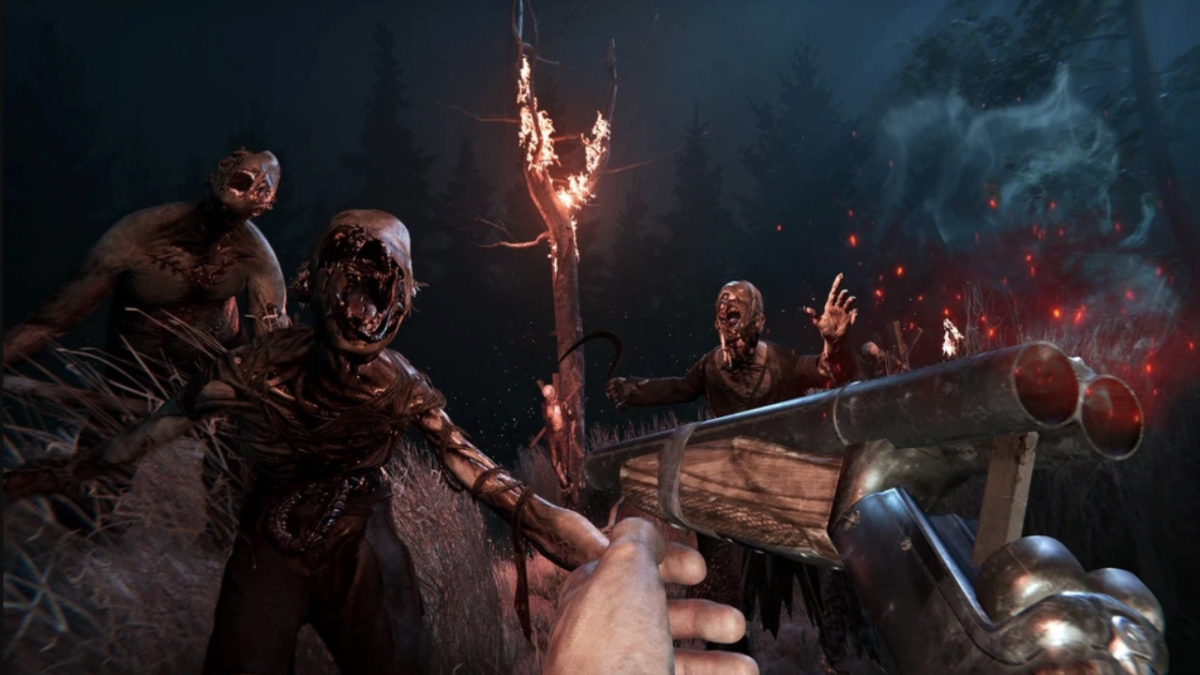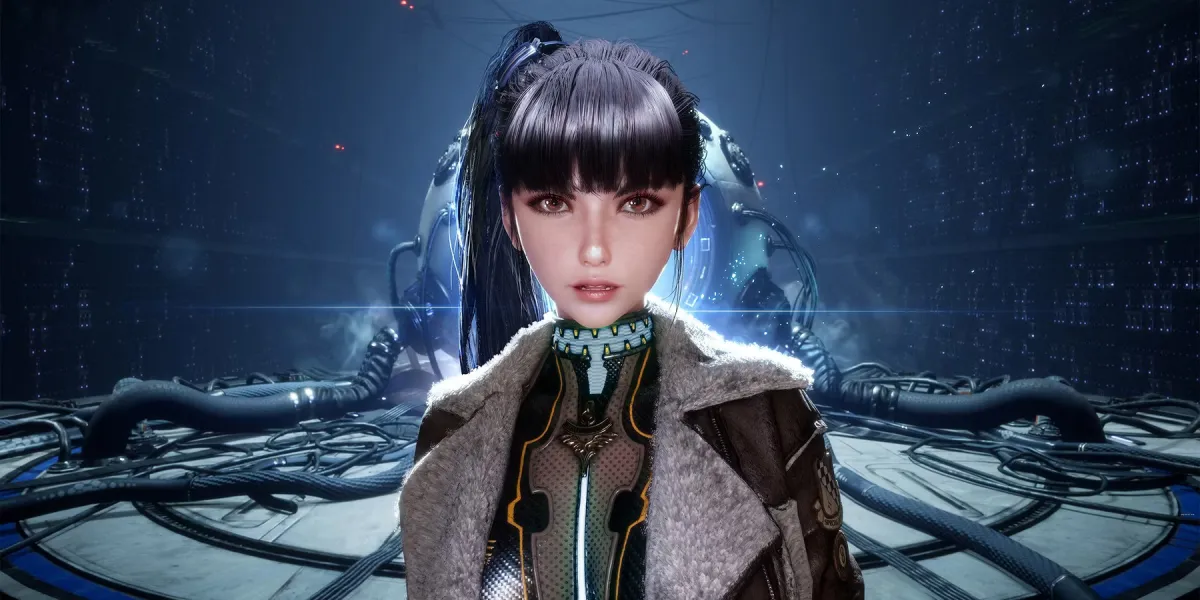In 2005, Erik Alm was 24 and living in Stockholm, Sweden, after dropping out of the prestigious KTH Royal Institute of Technology in Sweden because he had been playing too much Doom and Diablo II. He was a bright, straight-laced chemistry student with a shaved head and friendly smile, and he was now enrolled at the significantly less prestigious Stockholm University. Its campus, located on one of the many islands that collectively make up the Swedish capital, had wide-open green spaces punctuated by buildings that were either curiously segmented or had dramatic curves.
Alm breezed through exams but struggled to get work done outside of class and turn in reports on time. Most days, he was tightly focused on a more inward, lifelong pursuit: developing his skill as a maker of custom levels for Doom. He’d started building Doom stages even before he had access to the internet and a way to share them with other people. By the time he connected to the wider Doom world in the early 2000s, he was releasing small level packs, .wad files that showed serious promise. In 2003, the 22-year-old released the first 32-level Scythe megawad, which served as a full replacement for Doom 2.
It’s difficult to overstate the impact Alm has had on the Doom mapping scene, which remains the largest and most fruitful incubator of old school level design on the planet. On Doomworld.com, the largest forum and grounds for releasing maps and mods, Alm haters are about as hard to find as id Software haters. The blockbuster mappers of today, particularly Paul “Skillsaw” DeBruyne, owe a large debt to Alm. The contest for best community mapper of all time would likely include those two as top contenders. During the late 1990s and early-to-mid 2000s, new ports of the Doom source code opened up more graphical doors. While many designers experimented with layering on visual detail, Alm’s muscular, gameplay-oriented style and clean architecture had greater staying power. It continued the template set by Doom designer John Romero, who had realized that abstraction is key to the game’s engine.
Alm is a thread running through much of Doom mapping’s history, but there are other strands and loops and frayed bits. The closer you look, the more you see.
“Yeah, that’s it.”
The Doom scene began before the first game was released in 1993 with fans gathering all available information about id’s signature work on Usenet groups and compiling an unofficial Doom FAQ, which id later released with version 1.4 of the game in 1994. Doom mapping was first practiced in 1993, during the game’s development in Mesquite, Texas, where id had relocated to after the success of its earlier games, including the Commander Keen series.
The new Doom engine, created primarily by lead programmer John Carmack, had limitations. There could be no rooms on top of rooms or sloped surfaces. But it had angular hallways and could create striking locations with little manipulation. Before then, 3D levels had been either flat and maze-like, as in Wolfenstein, or slower and more limited in what they could render, like in Ultima Underworld.
“It was a huge challenge to make levels that no one had ever seen before in any game,” Romero said. id began by making disappointing, Wolfenstein-like levels that underutilized the engine and frustrated Romero. Hoping to vault beyond these early attempts and worried that uncertainty over mapping would kill the project, he hunkered down one day in front of id’s internal editor. The breakthrough came on what became the game’s second level, Nuclear Plant. Near the end, where the player drops into a deep, shadowy room filled with zombies and imps while more enemies snipe from raised platforms on each side, Romero found Doom’s voice. It was a simple but imposing setup. It was scary.
Romero brought designer Tom Hall and the artists into the room to show them. “Yeah, that’s it,” he said, and they agreed.
Doom mapping had a blueprint, and to this day, pushing what’s called the “verticality” of a map is a popular creative strategy. There are plenty of 3D structures the engine can’t conjure, but towering, monolithic platforms, walkways, and walls still look cool. “You have a sense of wonder rather than trying to fulfill expectations in a lame way,” Romero said.
With that new direction, Romero made the second, fifth, third, sixth, seventh, and ninth maps of Doom before creating what would become the first “E1M1,” Doom’s opening level, is a classic distillation of ideas worked out in the first series of levels, aka the first “episode.” A handful of maps Sandy Petersen and Hall designed for Doom’s second episode, “The Shores of Hell,” have attained immortality, but nothing is thought of quite as highly as E1M1 and the remainder of the first episode, Knee-Deep in the Dead.
American McGee, Romero, Petersen and other designers stretched the form further to include grander abstract structures in Doom 2. The levels are darker and adhere to fewer assumptions. Petersen’s “Monster Condo,” which falls near the end of the game, has a simple, dream-like opening but then starts to morph, the space unleashing a nightmare of demons and sliding walls.
Romero kept making levels. With a deadline approaching he designed The Ultimate Doom’s diabolical pressure cooker “Perfect Hatred” between midnight and 6 a.m. with a deadline looming. In 2016, Romero released two single-level wads on Twitter to warm up, he said at the time, for his upcoming FPS project Blackroom. He promised further details of that game “will be announced when [they’re] announced.”
Instead of satisfying his jones for Doom-mapping, the mini-project inspired Romero to create a whole new fifth episode for Doom called Sigil that’s set in an ultra-deep stratum of hell too difficult for Romero himself to complete on the ultra-violence skill setting. He announced the surprise project on Doom’s 25th anniversary along with three means of distribution: a limited super-luxe Beast Box that included music by Buckethead and a pewter statue of Romero’s head on a spike, plus a cheaper box, and a levels-only free wad to be distributed online in mid-February.
After Romero tweeted the cover, an opulent illustration of a horned Baphomet, the Church of Satan posted a gif of the Doom guy giving a thumb’s up.
“I try to please the dark one as much as possible,” Romero replied.
 Rise of the Megawad
Rise of the Megawad
Community mapping is often said to have begun in March 1994, when Jeff Bird of Australia released a hacked together, one-level project called “Origwad” to the Doom Usenet group. More like a two-room apartment than a sprawling tech base, it can be completed in a few seconds. But Doom mapping had arrived contemporaneously with the first proper editor, the Doom Editing Utilities. Created by a pair of programmers using specs released by id, Doom Editing Utilities allowed people to design and compile their own levels.
That didn’t mean it was easy. “One thing that is often lost on people today is how primitive tools were back in the early days,” said Doomworld administrator Andrew Stine. “It’s a miracle that the early years of Doom‘s existence resulted in such an explosion of creativity.”
The first year or so after the release of Doom II did see tremendous growth in community mapping, but it was also, paradoxically, a time of incubation. Many early community-defining projects came out during 1996, often the result of collaboration between several different mappers. The “Eternal Doom” megawad, a favorite of Romero’s, had an RPG-like focus on exploration, custom textures, and a surfeit of puzzles. It demonstrated amateurs could band together and create level sets worthy of a commercial project. A megawad called “Icarus: Alien Vanguard” took Doom into a different science fiction world than the usual demon-infested one. Another called “Memento Mori” drew on the talents of about 20 different mappers and still stands as a community touchstone.
Romero had watched the scene from the beginning, observing how people were hacking the engine to make unique new assets like invisible staircases. When he came across the soon-to-be-released “TNT: Evilution” megawad in late 1995, he thought, “These guys are really good mappers.”
He also got a wild idea: Why not publish the work in a real box as something like an official expansion? After negotiations led by Doom mapping legend Ty Halderman, TeamTNT realized it couldn’t say no, although some community members later objected to having to pay for a level set originally intended to be released for free. To round out the unusual box, id commissioned another megawad from two of Evilution’s roster of mappers, brothers Dario and Milo Casali.
Rising stars who had also contributed to Memento Mori, the brothers had been pouring their time into the game, playing laggy online co-op. “We played well into the night, day after day,” said Dario, who’s now a level designer at Valve Corporation. They built a 32-map Final Doom megawad known as “The Plutonia Experiment.” Pitiless in its approach, it hit players with surprise chaingunners, chased them through a muddy maze with arch-viles, and raised the stakes by concocting unusual, dramatic enemy encounters. “We played so much Doom that by the point we were making Plutonia maps we really wanted to do something different,” Dario said. Plutonia, today, is oddly prescient of many of the big wads to come in the next 20-plus years, including Scythe 2.
One of Milo’s secret maps for Plutonia, called “Go 2 It,” was a version of Doom II‘s first map expanded to contain about 200 enemies. Many argue this was the beginning of “slaughter”-style of mapping, an aesthetic reminiscent of bullet hell that has enjoyed the support of some of Doom‘s best designers despite seeming ham-fisted at first glance.
Thoroughly Modern Doom
Like the Casali brothers, Brad “Vorpal” Spencer spent a major chunk of the 1990s playing wads with friends and puttering around with level design and weapon hacks. In the late 1990s, he joined up with a megawad project organized by speedrunner Anders Johnsen, one of the early celebrities of Doom. Spencer had previously only produced a handful of “very noobish maps,” but he received a rapid education in level design. Each new map for the “Alien Vendetta” megawad went out to the group via a mailing list, which brought back a tidal wave of feedback. A level could easily go through 15 versions before getting final approval from Johnsen, who poked and prodded them endlessly.
While playing, it was difficult to identify either an “alien” or a “vendetta,” per se, but that didn’t bother Doomers when the first version rolled out in 2001. While not as polished as later wads, Alien Vendetta is among the very, very few community projects to enjoy a similar level of popularity as Scythe 2, and Alm cited it as an inspiration. AV had high monster counts and cool architecture that ran on doom2.exe and the Boom source port, which is still popular as a classic-feeling but powerful format that allows for more intricate geometry and a wider range of mechanical effects. The levels tilted toward slaughter near the end, giving it a modern face. Spencer thought highly of the wad but said he didn’t realize it was popular until he saw it discussed on a forum in 2010.
Somewhere between Alien Vendetta, Scythe, and the works of Esa “Espi” Repo — who showed how pixel-perfect custom textures could make Doom look fresh and new but not cluttered — a modern style emerged and reverberated through to the 2010s. You can see it in the Debruyne’s increasingly sexy levels and in the “Back to Saturn X” project, an exercise in making the most attractive doom2.exe-compatible wad ever. According to Xaser Acheron, a Dallas-based mapper and artist who’s part of the team, the idea was more difficult than it sounded. “The original Doom executable will fight you forever,” he said. It contains “visplane” limits and other restrictions catering to the much slower computers of 1993.
Espi died from cancer in 2009, leaving behind a level that stands as something like a monument to him. Tucked inside a never-completed follow up to Eternal Doom, “The Shrine” takes place on a sprawling campus of ancient stone buildings. For a Doom level, it’s strangely calm — the player passes in and out of dark catacombs and onto byzantine blocks in a totemic, abstracted world. It’s hard to think of a better-looking map. “The Shrine is only the second most amazing thing I ever saw Espi do,” Acheron says. After Espi’s arm was amputated in 2008, he posted a video to YouTube of himself playing Doom with just his mouse. “He had reconfigured his control setup,” Acheron said. “That is somebody getting right back in the game.”
The 2010s brought a new level of professionalism and polish to the Doom scene, according to Acheron. People started to talk more about “flow” and providing signposts for players. Playtesting increased, and while advanced source ports such as ZDoom and Eternity allow for greater scripting and 3D geometry, the community has largely eschewed the powers. Acheron is a proponent of Zdoom scripting but said many people don’t see it as worth the trouble. “It’s harder,” he said. “You’ve doubled your workload.”
Young Blood
Zach “Ribbiks” Stephens produced his first work as a Doom mapper when he was about seven years old. An ultra-megawad of 37 maps, “Zach’s Non-Ultimate Doom I” came complete with cover art featuring Doomguy shooting a bright red cacodemon. The first map, the nail-biting, genuinely Ultimate-esque “Death is here (aka fun tunnel)” is crammed wall-to-wall with enemies and items.
“The monster placement is a disaster,” he said.
Stephens found the wad, literally a wad of paper, in a drawer at his parents’ house while visiting there for the holidays in 2013. To pass the season, he made several of the stapled maps into actual levels. Blue ink pen lines became Doom engine linedefs in an editor.
Stephens first played Doom in the late 90s but didn’t make his first maps until the early 2000s and didn’t get serious about the craft until about 2010. While Skillsaw’s work can feel like a super slick love letter to the shareware era, Stephens’ is interested in something stranger and more oppressive. His maps can feel like an extended trip to an aggressive alien archipelago.
The 2015 megawad Sunlust, made by Stephens and fellow slaughter enthusiast Daniel “Dannebubinga” Jakobsson, is now considered one of the greatest ever made — but much of the initial reaction was negative. Doom players have endless opinions on how monsters should be arranged in rooms and corridors. The developers’ original idea was to take a hardcore or extreme style and make it fair and accessible for the masses, with monster counts still ratcheting up in the later levels. “That’s probably the most I’ve sold out in my mapping career,” said Stephens, only half joking. His works are normally smaller and tougher, with a moody, monochromatic sheen.
Stephens lives in Champaign, Illinois, which he calls “the middle of nowhere corn country,” in a small apartment with a Blue Heeler dog. He’s finishing up a Ph.D. in electrical engineering at the University of Illinois, and like many people who have committed large amounts of time to making Doom stuff, he doesn’t have the clearest explanation for what drives him. “If I wasn’t into Doom modding, I’d probably be playing around in SketchUp or another CAD program where you’re putzing around with 3D geometry,” he said. “I view Doom as more of a canvas than as a game.”
One of Stephens’ favorite mappers, Michael Jan “Valkiriforce” Krizik, also feels it would have been unnatural for him not to design something. Between 2009 and 2011, while living with his grandparents in the Los Angeles area, he went from being a 19-year-old novice to one of the best in the scene. His maps have an old school, traditional flavor, reflecting his love of the original games. They can seem like the recently unearthed work of a long lost id designer. He released two full megawads in 2011, “Doom Core” and “Reverie.” His work has earned a place on many players’ favorites list, but Krizik said the spotlight makes him uncomfortable.
When he wasn’t mapping or thinking about mapping, Krizik rode a bike or jogged. He attended church and studied the Bible, which he’d begun doing in high school. He dreamed about Doom levels, about arenas filled with monsters, and he’d wake up and write down map titles that later became seeds of inspiration. All it took was a prompt like, “Armageddon Valley.”
Krizik had so many ideas, he couldn’t keep up. “It still blows my mind that I was able to keep working at the pace I did,” he said.
While Doom was associated with Satanism during the 1990s, the demons and violence in the game have never bothered Krizik. “I know it’s not selling those ideas as a base for anyone to believe,” he said. “For me, it’s just a game.”
Abandon All Hope
Doom‘s most notorious mapper is probably Chris “TimeOfDeath” Balch, who has made more than 200 levels in a style that’s diametrically opposed to Krizik’s. One of the grand deacons of slaughter, Balch forces players to walk a crowded tightrope, performing complex “platforming” or manipulating the game’s movement system to reach speeds not intended by id.
“It’s not good enough that you can punch down a cyberdemon,” said Stephens. “TimeOfDeath wants to know if you can punch down 100 cyberdemons in a row without getting hit.”
Balch lives about 30 miles west of Toronto in farm country, where he works for his dad’s mining exploration company, dealing in real-world mapping data. In Doom, his M.O. is to create a complex, forbidding level, or a set of them, and prove it can be beaten by recording himself playing it on the 2002 PC he uses for Doom. His Death Star-like “Nostril Caverns,” named after his one-man metal band that once released an album with 90 songs, looks like a blueprint for a black hole. Playing all the way through is an exercise in both skill and a test of sanity. Rooms get bigger and bigger and contain larger and larger hordes, totaling almost 10,000 baddies compared to the approximately 170 in Monster Condo.
“His maps sometimes seem like they were designed by an alien with completely different sensibilities,” said Stephens, who is part of a core group of TimeOfDeath fans.
It took Balch about a week to demo Nostril Caverns. He fit in an approximately two and a half hour no-save run between working, walking his dogs and eating. “That one was an endurance test,” he said. “The feeling of building something based on an idea and then beating the thing you created is a very fulfilling experience.”
Nostril.wad remains filed away in the idgames archive like one of the crates at the end of Raiders of the Lost Ark, waiting for the world to be ready for it.
Back to Alm. While making the first Scythe megawad in 2003, the young Swedish mapper had gotten very fast at using an otherwise slow community editor called DETH (Doom Editor for Total Headcases). He knew solo megawads were like great mountain climbs. To reach the summit, one must pass the frozen remains of hundreds of failed efforts. So Alm took the fast route, speed-mapping 17 or 18 levels. When he realized they were “quite good,” he slowed down to make the later levels more dramatic. His work culminated in a final map that was punishingly difficult. For inspiration, he looked to a classic monster-filled wad called “Hell Revealed” as well as the narrow, knuckle-busting levels of Malcolm Sailor.
Scythe was a hit. Scythe 2 became an even bigger hit, but it was immeasurably more difficult to produce. Alm broke up the first 30 levels into 6 episodes of five maps, each with its own style, never straying far from basic Doom thematics such as tech bases, ruined cathedrals, rocky brown hellscapes, jungle ruins, and emerald sludge. The second episode, set in a shadowy Egyptian temple world, recalled the monumental pyramid level from the popular Alien Vendetta megawad released in 2001. The labyrinthine level now effectively serves as a memorial to its creator, Norwegian mapper Kim Andre Malde, who died in 2012.
While some mappers begin by creating architecture and fill it in later with monsters and power ups, Alm had always proceeded in chunks, orchestrating and testing as he went. He wasn’t a perfectionist, but he kept getting stuck on the Scythe sequel, first on the seventh map of and then on the 15th. He was spending long nights at home, immersed in DETH, or avoiding the project and kicking himself. “I felt really bad about not working on it and went in and out of depression,” he said.
He made a custom Doomguy enemy for the 16th map, which got him going again. While he didn’t like some of the next maps, he forged ahead anyway. Later in the wad, amid the jungle theme, he ratcheted up the difficulty to an “excruciating” level. In Doom, enemies are just low-res sprites with relatively simple code for A.I., so rendering dozens or even hundreds of them is no problem for most modern PCs. But there’s also a human element to that equation. Alm’s ace playtester, an elite Doomer known as Vile, struggled with the newest levels: Swarms of mid-tier enemies bore down on him between temple walls, leaving him little room to maneuver.
Near the end of the project, Alm switched to Doom Builder, a spiffy modern editor with a 3D preview mode and intuitive controls. But the new powers unleashed his pent-up perfectionism. He obsessed over how the maps looked, building grander and grander vistas until he could no longer keep up with his own standards. “It felt a bit hopeless to continue at that point,” he said. He released what he had in the summer of 2005 and went on hiatus from Doom, playing a great deal of online poker and starting a Ph.D. program. In 2009, he finished the final levels of Scythe 2 and released two-thirds of another planned wad, “Scythe X,” before falling away again.
Why dedicate so much time and energy to a game released in 1994? Alm had other distractions while making Scythe 2. Besides school, he had a partner and lived in a beautiful city. “I honestly do not really know,” he said. “Some part of it was the feeling of accomplishment. But also, I just really love the game and like to spend time with it.”
He thinks about coming back. A laptop with a busted power supply in his basement storage unit contains two unreleased Scythe X levels, just gathering dust. It would be “a shame” if they never saw the light of day, he said.




